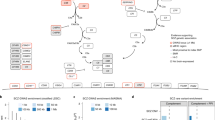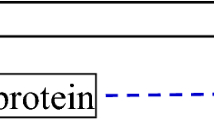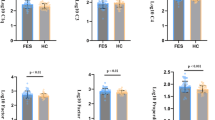Abstract
Recent work suggests that genes encoding complement proteins that are active in the innate immune system may confer risk for schizophrenia by disrupting typical synaptic pruning in late adolescence. Alterations in the complement pathway may contribute to aberrant cortical thinning in schizophrenia prodromes and reduced prefrontal cortical thickness in chronic schizophrenia patients; however, this theory needs to be translated to humans. We conducted a series of analyses in a sample of adult Swedish twins enriched for schizophrenia (N=129) to assess the plausibility of a relationship between complement gene expression and cortical thickness that could go awry in the etiology of schizophrenia. First, we identified that peripheral mRNA expression levels of two complement genes (C5, SERPING1) made unique contributions to the variance in superior frontal cortical thickness among all participants. Vertex-wise maps of the association between gene expression levels and thickness across the cortex suggested that this relationship was especially strong with SERPING1 in the superior frontal region, consistent with the pattern of disruption in cortical thickness observed in schizophrenia. Additional analyses identified that these genes are expressed in the human superior frontal cortex, that heritable genetic factors influence SERPING1 gene expression levels, and that these associations are observed regardless of case status. These findings provide initial evidence linking the complement system with cortical thinning in humans, a process potentially involved in the pathogenesis of schizophrenia.
Similar content being viewed by others
Log in or create a free account to read this content
Gain free access to this article, as well as selected content from this journal and more on nature.com
or
References
Alfons A (2016). Robust methods for high-dimensional data. CRAN Repos at https://cran.r-project.org/web/packages/robustHD/robustHD.pdf.
Barton K (2016). Package ‘MuMIn.’ CRAN Repos at https://cran.r-project.org/web/packages/MuMIn/MuMIn.pdf.
Bennett MR (2011). Schizophrenia: susceptibility genes, dendritic-spine pathology and gray matter loss. Prog Neurobiol 95: 275–300.
Bourgeois J, Goldman-Rakic PS (1994). Synaptogenesis in the prefrontal cortex of rhesus monkeys.
Cannon TD (2015). How schizophrenia develops: cognitive and brain mechanisms underlying onset of psychosis. Trends Cogn Sci 19: 744–756.
Cannon TD, Chung Y, He G, Sun D, Jacobson A, van Erp TGM et al (2015). Progressive reduction in cortical thickness as psychosis develops: a multisite longitudinal neuroimaging study of youth at elevated clinical risk. Biol Psychiatry 77: 147–157.
Catts VS, Fung SJ, Long LE, Joshi D, Vercammen A, Allen KM et al (2013). Rethinking schizophrenia in the context of normal neurodevelopment. Front Cell Neurosci 7: 60.
Chu Y, Jin X, Parada I, Pesic A, Stevens B, Barres B et al (2010). Enhanced synaptic connectivity and epilepsy in C1q knockoutmice. Proc Natl Acad Sci USA 107: 7975–7980.
Chung Y, Jacobson A, He G, van Erp TG, McEwen S, Addington J et al (2015). Prodromal symptom severity predicts accelerated gray matter reduction and third ventricle expansion among clinically high risk youth developing psychotic disorders. Mol Neuropsychiatry 1: 13–22.
Davis AE, Lu F, Mejia P (2010). C1 inhibitor, a multi-functional serine protease inhibitor. Thromb Haemost 104: 886–893.
Dobbins IG, Wagner AD (2005). Domain-general and domain-sensitive prefrontal mechanisms for recollecting events and detecting novelty. Cereb Cortex 15: 1768–1778.
Glausier JR, Lewis DA (2013). Dendritic spine pathology in schizophrenia. Neuroscience 251: 90–107.
Gogtay N, Giedd JN, Lusk L, Hayashi KM, Greenstein D, Vaituzis AC et al (2004). Dynamic mapping of human cortical development during childhood through early adulthood. Proc Natl Acad Sci USA 101: 8174–8179.
Goldman AL, Pezawas L, Doz P, Mattay VS, Fischl B, Verchinski BA et al (2013). Widespread reductions of cortical thickness in schizophrenia and spectrum disorders and evidence of heritability. Arch Gen Psychiatry 66: 467–477.
Gronenschild EHBM, Habets P, Jacobs HIL, Mengelers R, Rozendaal N, van Os J et al (2012). The effects of FreeSurfer version, workstation type, and Macintosh operating system version on anatomical volume and cortical thickness measurements. PLoS ONE 7.
Hagler DJ, Saygin AP, Sereno MI (2006). Smoothing and cluster thresholding for cortical surface-based group analysis of fMRI data. Neuroimage 33: 1093–1103.
Han X, Jovicich J, Salat D, van der Kouwe A, Quinn B, Czanner S et al (2006). Reliability of MRI-derived measurements of human cerebral cortical thickness: the effects of field strength, scanner upgrade and manufacturer. Neuroimage 32: 180–194.
Hawrylycz M, Lein E, Guillozet-Bongaarts A, Shen E, Miller J, Al E (2012). An anatomically comprehensive atlas of the adult human brain transcriptome. Nature 489: 391–399.
Hayasaka S, Nichols TE (2003). Validating cluster size inference: random field and permutation methods. Neuroimage 20: 2343–2356.
Horton R, Wilming L, Rand V, Lovering RC, Bruford EA, Khodiyar VK et al (2004). Gene map of the extended human MHC. Nat Rev Genet 5: 889–899.
Mayilyan KR, Weinberger DR, Sim RB (2008). The complement system in schizophrenia. Drug News Perspect 21: 200–210.
Miller JA, Menon V, Goldy J, Kaykas A, Lee CK, Smith KA et al (2014). Improving reliability and absolute quantification of human brain microarray data by filtering and scaling probes using RNA-Seq. BMC Genomics 15: 154.
Nakagawa S, Schielzeth H (2013). A general and simple method for obtaining R2 from generalized linear mixed-effects models. Methods Ecol Evol 4: 133–142.
O’Connor TG, Moynihan JA, Caserta MT (2014). Annual research review: the neuroinflammation hypothesis for stress and psychopathology in children—developmental psychoneuroimmunology. J Child Psychol Psychiatry Allied Discip 55: 615–631.
Okoniewski MJ, Miller CJ (2006). Hybridization interactions between probesets in short oligo microarrays lead to spurious correlations. BMC Bioinformatics 7: 276.
Orsini F, De Blasio D, Zangari R, Zanier ER, De Simoni M-G (2014). Versatility of the complement system in neuroinflammation, neurodegeneration and brain homeostasis. Front Cell Neurosci 8: 380.
Paus T (2005). Mapping brain maturation and cognitive development during adolescence. Trends Cogn Sci 9: 60–68.
Pinheiro JC, Bates DM Mixed-Effects Models in S and S-PLUS. Springer: New York; (2000).
Plomin R, DeFries J, Knopik V, Neiderhiser J Behavioral Genetics, Vol. 6. Worth Publishers: New York, 2013.
Radich JP, Mao M, Stepaniants S, Biery M, Castle J, Ward T et al (2004). Individual-specific variation of gene expression in peripheral blood leukocytes. Genomics 83: 980–988.
Ripke S, Neale BM, Corvin A, Walters JTR, Farh K-H, Holmans PA et al (2014). Biological insights from 108 schizophrenia-associated genetic loci. Nature 511: 421–427.
Saijo K, Glass CK (2011). Microglial cell origin and phenotypes in health and disease. Nat Rev Immunol 11: 775–787.
Schafer DP, Lehrman EK, Kautzman AG, Koyama R, Mardinly AR, Yamasaki R et al (2012). Microglia sculpt postnatal neural circuits in an activity and complement-dependent manner. Neuron 74: 691–705.
Sekar A, Bialas AR, de Rivera H, Davis A, Hammond TR, Kamitaki N et al (2016). Schizophrenia risk from complex variation of complement component 4. Nature 530: 177–183.
Sullivan PF, Fan C, Perou CM (2006). Evaluating the comparability of gene expression in blood and brain. Am J Med Genet—Neuropsychiatr Genet 141 B: 261–268.
Sullivan PF, Kendler KS, Neale MC (2003). Schizophrenia as a complex trait: evidence from a meta-analysis of twin studies. Arch Gen Psychiatry 60: 1187–1192.
Tamnes CK, Østby Y, Fjell AM, Westlye LT, Due-Tønnessen P, Walhovd KB (2010). Brain maturation in adolescence and young adulthood: regional age-related changes in cortical thickness and white matter volume and microstructure. Cereb Cortex 20: 534–548.
Wang Z, Gerstein M, Snyder M (2009). RNA-Seq: a revolutionary tool for transcriptomics. Nature Rev Genet 10: 57–63..
Whitney AR, Diehn M, Popper SJ, Alizadeh AA, Boldrick JC, Relman DA et al (2003). Individuality and variation in gene expression patterns in human blood. Proc Natl Acad Sci USA 100: 1896–1901.
Woodruff TM, Ager RR, Tenner AJ, Noakes PG, Taylor SM (2010). The role of the complement system and the activation fragment C5a in the central nervous system. NeuroMolecular Med 12: 179–192.
Zheutlin AB, Viehman RW, Fortgang R, Borg J, Smith DJ, Suvisaari J et al (2016). Cognitive endophenotypes inform genome-wide expression profiling in schizophrenia. Neuropsychology 30: 40–52.
Acknowledgements
We thank the study participants, research staff members, and the Swedish Board of Health and Welfare. We also thank Avram Holmes, David Glahn, and Sebastian Therman for their comments on drafts of the manuscript. We thank the National Institute of Mental Health (RO1 MH052857, Principal Investigator: TDC) and the Stockholm County Council (ALF 20100305) for financial support.
Author information
Authors and Affiliations
Corresponding author
Additional information
Supplementary Information accompanies the paper on the Neuropsychopharmacology website
Supplementary information
Rights and permissions
About this article
Cite this article
Allswede, D., Zheutlin, A., Chung, Y. et al. Complement Gene Expression Correlates with Superior Frontal Cortical Thickness in Humans. Neuropsychopharmacol. 43, 525–533 (2018). https://doi.org/10.1038/npp.2017.164
Received:
Revised:
Accepted:
Published:
Issue date:
DOI: https://doi.org/10.1038/npp.2017.164
This article is cited by
-
Common risk alleles for schizophrenia within the major histocompatibility complex predict white matter microstructure
Translational Psychiatry (2024)
-
Correlation between frailty and reduction in cortical thickness in patients with chronic obstructive pulmonary disease
Scientific Reports (2024)
-
Serping1 associated with α-synuclein increase in colonic smooth muscles of MPTP-induced Parkinson’s disease mice
Scientific Reports (2024)
-
Serum complement proteins rather than inflammatory factors is effective in predicting psychosis in individuals at clinical high risk
Translational Psychiatry (2023)
-
Complement pathway changes at age 12 are associated with psychotic experiences at age 18 in a longitudinal population-based study: evidence for a role of stress
Molecular Psychiatry (2021)



